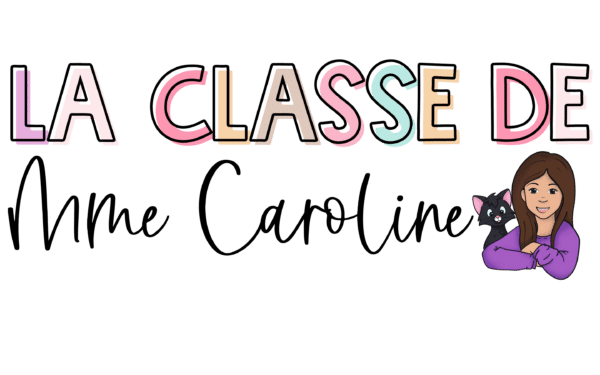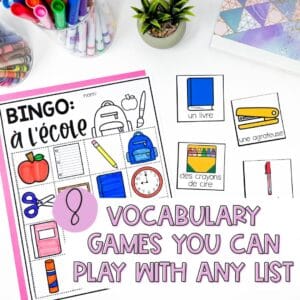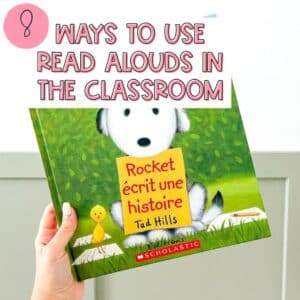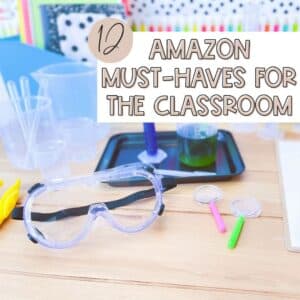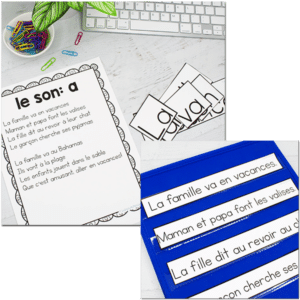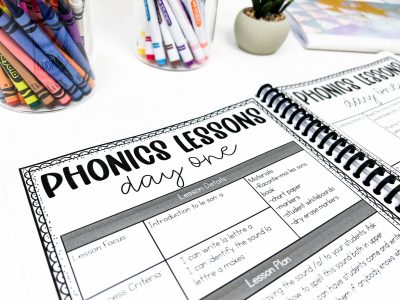In this post, I’ll be describing my Kindergarten Flow of the Day. For context, my school hours are 8:00-2:30. I would switch classes around 11:15 every day. The times I put in are approximate. I went by the cues of my students rather than the clock. Sometimes if the students were very engaged, I let things go longer. On the other hand, if things weren’t going well, I did not hesitate to cut activities short. I tried to keep the number of transitions from indoor to outdoor to a minimum, but unfortunately, with the way our school’s schedule is, there’s only so much I could do. We follow the same schedule as the rest of the school so the students have 2 outdoor recess blocks per day.
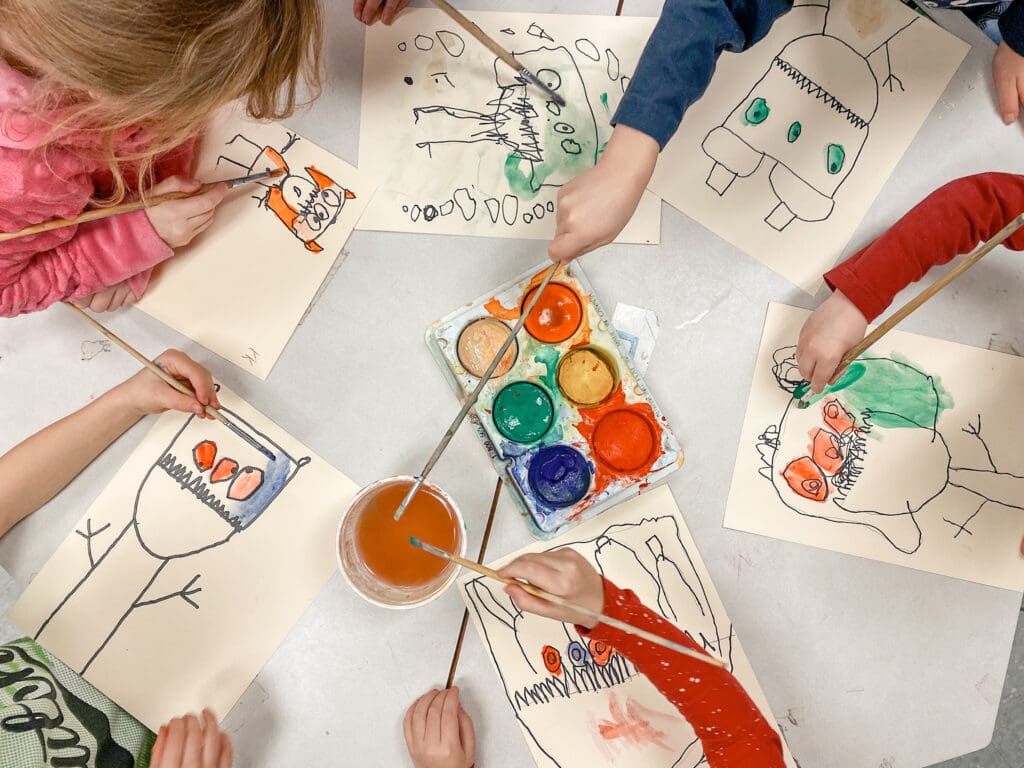
Kindergarten Flow of the Day
8:00-8:30: Entry and Soft Start
When students arrive into the yard, they drop their backpack off in our class line and go play until the bell rings. When the bell rings, they come to the line, get their bags and prepare to enter the school. One educator stays with the students in line and the other one does a check to ensure we have everybody. Not all classes go in first thing, so sometimes we have a few who try to stay outside with the other classes.
Once inside, the students go to their cubbies, change out of their outdoor clothing (jackets, shoes, etc.), give us their note totes, then go into the classroom where each table has some activities set up. We don’t do the same activities each day, but we make sure to put out things that are self explanatory. That way they can play independently for a little bit and we have time to help other students, do attendance, go through the note totes, etc.
Soft Start Activity Ideas:
- Playdough
- Puzzles
- Lego
- Drawing/Colouring
- Magnatiles
- Pattern Blocks
- Kinetic Sand
- Whiteboards
What I love about starting our flow of the day this way is our fast students don’t wind up having to sit around and wait for the rest of the class to be ready for circle. It gives them something to do immediately when they are ready.
8:30-8:45: Clean up and Circle Time
Around 8:30, the students tidy up their activity, leave all materials on the table in the bin and come to the carpet. I then run a circle activity with them for about 10 minutes. Before I let them go, I explain the 4 centers to them.
8:45-end of activity: Small-Group Activities
With the way the ECE schedule works in my board, the first two hours of the day, there are 2 educators with the class and for the rest of the day, there are 3 educators. Doing my small-group activities during this time means only 2 centers can be teacher-led so the other two activities need to be accessible for the students to do independently. The activities are planned based on subject. There is always an activity based on literacy, math and fine motor. The fourth one changes each week; it might be a second math or literacy activity, an art activity, a science activity, etc. Students work at their own pace and transition to open play once they are done their activity.
What happens on Day 5?
You may have noticed that I only do 4 centers. This means there is one day left where there is nothing. Friday is art day! I do directed drawings with the class and I do them whole class. They are very popular with the class and work well as a whole-group activity. See my previous post about Directed Drawings for more information on how I run my art lessons.
End of Small-group-9:30: Purposeful Play and Clean Up
Like mentioned above, this part of my flow of the day doesn’t have a specific start time because it depends on how quickly the students work. They usually do their small-group activities for about 10 minutes, but sometimes they really love it and wind up working for longer. They transition directly from the activities to play once they show an educator that they’re done and that they’ve cleaned up their work area. We don’t open up the entire classroom during this time, because the period isn’t quite long enough before they need to transition to outside. We keep “high mess” areas closed and once the tables start freeing up, we put out some sit down activities at the tables. This way, they can play for a little bit longer before having to tidy up.
9:30-10:00: Transition to Outside/Outdoor Learning
Once most of the class is ready, one educator takes the class outside. The other stays behind with the stragglers. My school does recess first and nutrition break afterwards, so the students stay outside until the end of our recess period. If your school has their nutrition break before eating, I would personally keep the class inside until the bell and keep them outside longer after recess.
10:00-10:40: Recess and Nutrition Break
Students play outside until 10:20, then come inside for their nutrition break.
10:40-11:15: Open Play
Once they finish eating, they move into open play. Their open play block is longer than the time written above, because they continue it with their English teacher after I move to my afternoon class. I work with two part time OCT partners (one per class), so I wait for my partner to arrive before I move over to my other classroom.
11:15: I change Classrooms
At this point, I have everything I needed to bring over to the other room in one spot, I grab it all and move over to my other room. Unfortunately, my school was built to only have 2 kindergarten classrooms. The other two rooms were retrofitted and are not beside each other. The full transition from one room to another takes about 5 minutes, assuming I didn’t forget anything in my first class. This is definitely the trickiest part of my flow of the day. I often forget things. It’s so hard to stay organized and transition quickly when the rooms are in different hallways.
11:15-11:30: Transition to French/Circle Time
When I get there, the students tidy up what they were doing with their English teacher and transition to circle time with me. I repeat the same circle lesson I had done with my morning class. This is one of the major pros to teaching two classes – a lot of your planning (minus specific inquiry-based things) can be repeated.
11:30-End of Activity: Small-Group Activities
This is mostly the same as above – students work on their small-group activities until they are done and move into purposeful play. The main difference here is that I am working with 2 other educators, so 3/4 of our centers are teacher-led. Only one independent activity needs to be planned!
End of Small-Group-12:05: Purposeful Play and Clean Up
Because this play period is also on the shorter end, we keep certain “high mess” areas of the class closed off so that they can play for longer before having to tidy up. Once the classroom is clean, they move onto getting ready for outside.
12:05-12:20: Transition to Outside
This is the exact same as this morning. We get them ready to go and take them outside either right for the bell or slightly early. It really depends on how quickly they get ready.
12:20-1:10: Recess and Nutrition Break
Our school has recess first, then nutrition break afterwards. The students play outside until 12:45 and then come inside for lunch.
1:10-2:00: Open Play and Clean Up
Once they’re done eating (after the bell), they move into open play. During this time, the most of the classroom is open. The construction area is usually the messiest, so we do put a limit on how many construction items are open during this block. Again, we do this to minimize how long it takes to tidy up to maximize their play time. We also put out some activities on the tables for students to work on.
2:00-2:30: End of the Day Transition
I invite the students to the carpet, I distribute the note totes and the students go to get ready. There are usually 3 educators with the class during this time, so once about half the class is ready to go, one educator will take them out. As they continue getting ready, another educator will take another group out.
The final educator remains with the stragglers and lets them go outside as they are ready (note: we do not do this in September because the kindergarten yard is not off of our classroom, but as the year progresses, we can trust most of them to walk out independently). When they come out, they put their backpacks in certain spots based on where they go (i.e., parent pick up, bus, after school program). The students get to play outside until about 2:20 when a whistle is blown and they need to go to their backpacks for the end of the day.
I hope the breakdown of my flow of the day helps you create yours. And don’t forget – it’s important to be flexible! Things will change, your students will grow and it’s important to “flow” with them.

